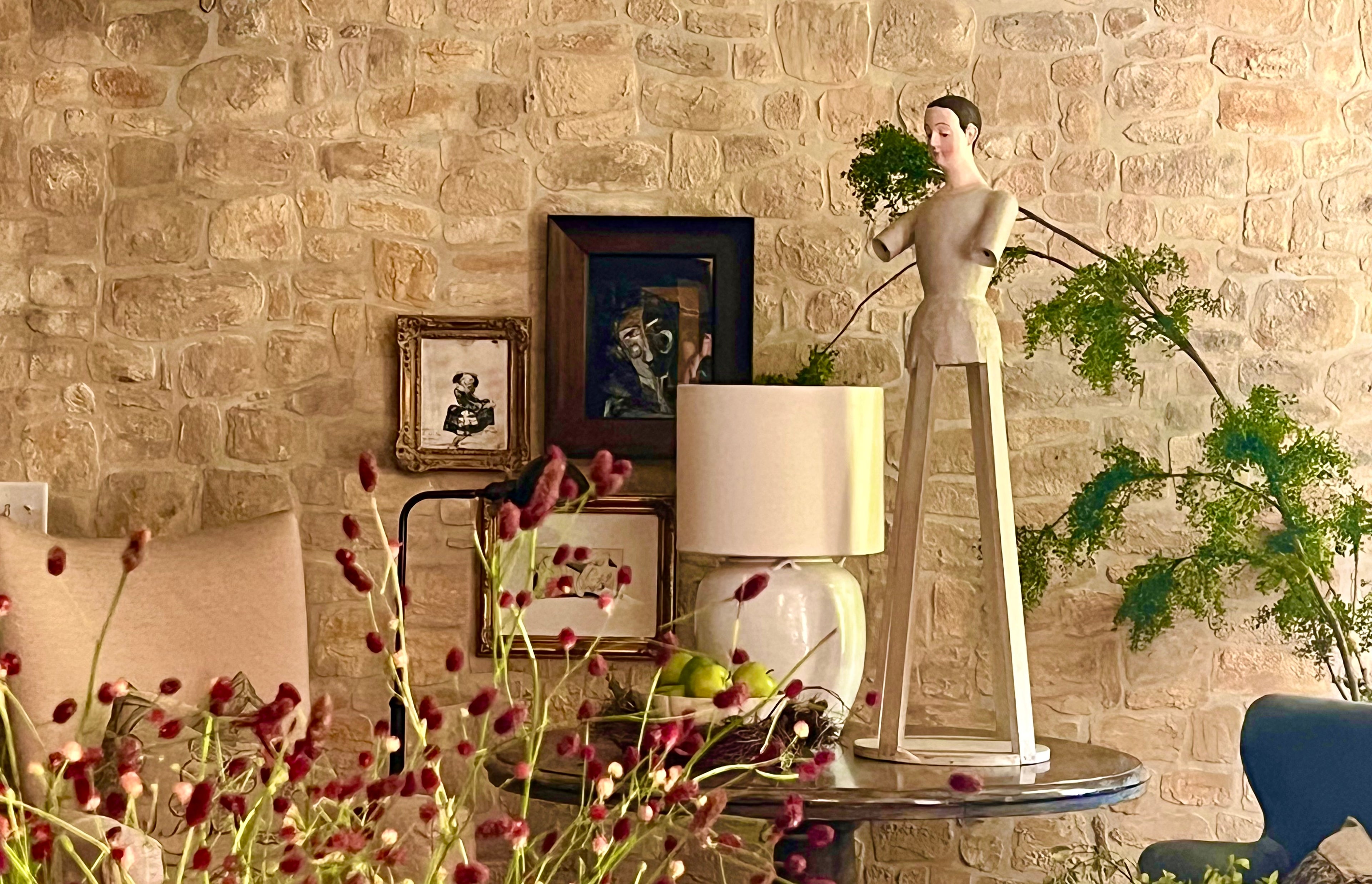DIY, John Saladino, look-a-like curtains
Share
How to create a custom curtain using ready made, store bought panels. I am a novice sewer but I like the look of custom made curtains - here I get brave and "sew" my own!

If you think that beautiful window treatments can't be accomplished inexpensively, think again!
Whether your intention is privacy or to control the light in a room, window treatments offer you the finishing touch for your decor and create drama in a room.Gather your materials:
- Ready made curtain panel(s)
- 3 to 5 options of various prints and weights (types) of fabric (cotton, linen, silk). Fabric sizes (scraps) can vary, but 14" length is recommended
- Ribbon or twine
- Needle and thread
- Pins
- Scissors
- Measuring tape

I started by choosing a store bought curtain that I liked. I wanted to cover my sliding patio door with floor to ceiling curtains, creating the illusion of space, giving some height to the room. Unfortunately the curtain panels I fell in love with were too short for what I had in mind, but it gave me the idea to alter them, adding a nice little fabric touch using inspiration from my favorite designer, John Saladino.


In most rooms the ceiling height is 8' tall (96"). The panels I purchased were 84" by 42". Standard patio doors are 6' 8" tall. Width size varies depending on whether the patio door is a two or three panel configuration. To achieve the floor to ceiling look I was after, I needed to add 12" to each panel. Decide how many panels you want for the sliding door (or window). This depends on how full you want your panels to be. Four panels gave the fullness and coverage I was looking for.
To hang my curtains (and extend the length) I added 12" fabric loops. Every other one was a loop which contained a tassel that I will now call a tassel-loop to make the instructions more clear.
Begin with one panel (example shows 84" by 42") to determine where loops need to be attached. I did not measure, but used a short cut to evenly distribute the tassel-loops across the top of the panel. Simply fold the curtain in half, mark the top center with a bright sewing straight pin. Place additional marking pins on left and right corners of the panel, as those need tassel-loops.
Next, open the panel and fold each marked corner in toward the center pin, mark the middle points with marking pins. Five tassel-loop installation points should now be marked with your straight sewing pins. I made the tassel-loops and attached them first, then sewed four pleats in the panel with additional loops (shown in a later step). Each panel will have a total of nine fabric loops, four will be plain fabric loops, sewn above pleats and five will be a tassel-loop. Marking the pleat positions is in a later step.

Take a break from marking and set aside your panels to create the tassel loop. Using your selected fabrics and ribbons, create strips. I love fabric and therefore I had lots of materials to choose from. Cut a narrow snip in the fabric and then rip through the length, 14" or longer is recommended. Some types of material will not rip, but must be cut. Silks and cottons will rip, linens and some blends require scissors. The width of your strips can range from a 1/4" wide to 2.5", use your personal taste. These strips will be the tassel-loop combination, texture and color/pattern variation make this a fun detail.



Lay strips flat and arrange in a pile that has a pleasing combination of color, texture and bulk.



Tie a knot in the center with your frayed threads from your fabric or you may choose to use twine or ribbon.

Sew the tassle-loop to the marked spot on your curtain panel.
The knot tied at the center is used to secure the tassle-loop to the curtain with thread. Repeat this process for all tassle-loops.



Between each tassel-loop pinch your fabric into a pleat. Fold one of the loop fabric pieces in half, pin to the back of the curtain and sew the loop at the pleat line.
Trim your tassels, tie the loops in knots 12" from the curtain top. Repeat the process for each of your panels.
This is a time consuming project, but the results are rewarding! I hope you are inspired to make your own details and add them to existing curtains.




